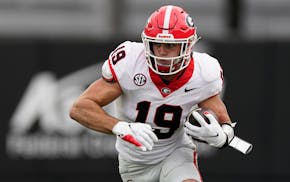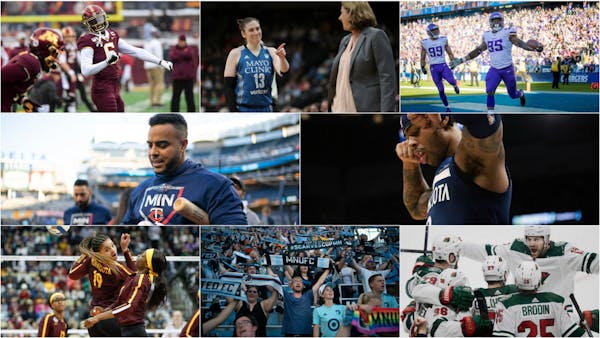A group of more than 1,000 Big Ten athletes took to the Players' Tribune on Wednesday calling for more protection for their well-being amid the coronavirus pandemic.
Gophers cornerback Benjamin St-Juste played a big role in this, as one of the co-presidents of College Athlete Unity (CAU), the group that penned the open letter. Several teammates are also members, including quarterback Seth Green, defensive tackle Micah Dew-Treadway, cornerback Phillip Howard, receiver Michael Brown-Stephens and former receiver Rashod Bateman.
"Now they know that we're unified and came together to voice our concerns," St-Juste said, adding the Gophers administration has been proud of their effort. "… You don't see 1,000 Big Ten players coming together every day."
This came just hours after the Big Ten released its revised 10-game, conference-only football schedule and updated testing protocols, which require a minimum of two tests per week, one within three days of competition for all high-risk sports. CAU, though, wrote that it believes the plan "falls short in certain areas." The group also admonished the NCAA for its "lack of leadership … with respect to player safety" and "laissez-faire approach" that has allowed individual schools and conferences to create their own protocols.
Pac-12 athletes released an even stronger letter this past weekend, announcing their intent to opt out of the season unless their conference negotiated with them on issues of health and safety, racial injustice, and economic equity.
The NCAA responded Wednesday to some of those requests, which the Big Ten group also echoed. The league mandated that universities honor athletes' scholarships even if they opt out of playing, won't require athletes to sign COVID-19 waivers in order to participate, and will cover all athletes' out-of-pocket medical costs related to COVID-19. The NCAA also will establish a phone number and e-mail for reporting safety compliance failures.
But some CAU requests aren't easy to fulfill. The group wants in-season testing three days per week for athletes and anyone they come in contact with, such as referees, media and medical staff. One of those tests has to be within 24 hours of competition, preferably the day of, with results returned at least two hours before competition. Two of the weekly tests need to be a FDA-approved ones with fewer than 1% false negatives, while the gameday one needs to be FDA-approved with fewer than 5% false negatives.
CAU also asked for automatic medical redshirts for athletes who miss any competition from a positive test or quarantine as well as preserved eligibility, scholarships and roster spots for athletes who opt out or have more than 40% of the season canceled. The NCAA left that up to each division to decide by Aug. 14.
Fall championships
The NCAA Division I Council will make the ultimate call next week on whether to cancel fall championships. Even if they are eliminated, there is still a way for Power Five sports to play in the fall — if those conferences break away from the NCAA and stage their own championships.
Meanwhile, the College Football Playoff, which is not run by the NCAA, announced Wednesday that the final rankings to determine the four teams in the playoff will be delayed two weeks to Dec. 20. The Rose Bowl and Sugar Bowl are this season's national semifinals.
UConn canceled
One Division I program has already pulled the plug on its football without waiting for the NCAA. Connecticut became first FBS team to suspend its team for the 2020 season.
"The safety challenges created by COVID-19 place our football student-athletes at an unacceptable level of risk," athletic director David Benedict, a former Gophers deputy AD, said in a news release.
Conference loans
The Gophers would lose about $75 million without sports this fall, according to school estimates. That total sparked discussion among the Board of Regents back in May of a bridge loan.
That's exactly what the Pac-12 is planning for its schools, per a report in the San Jose (Calif.) Mercury News. The loan program could cover the loss of football revenue for all 12 schools, a maximum of $83 million for each university at a rate of 3.75% through 10 years. That could cost $996 million.
Soldiers who lost limbs in Gaza fighting are finding healing on Israel's amputee soccer team
Minnesota state parks press on with camping reservation system tweaks


![TCF Stadium Saturday. ] Aaron Lavinsky • aaron.lavinsky@startribune.com The Minnesota Gophers played the Wisconsin Badgers on Saturday, Nov. 30, 201](https://arc.stimg.co/startribunemedia/HR3EZES3ZQB6VIB4JLEWCA74RE.jpg?w=600&h=600&auto=format%2Ccompress&cs=tinysrgb)